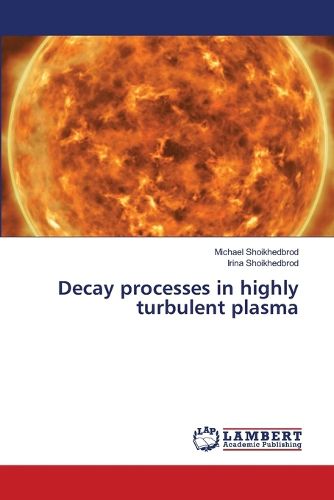Readings Newsletter
Become a Readings Member to make your shopping experience even easier.
Sign in or sign up for free!
You’re not far away from qualifying for FREE standard shipping within Australia
You’ve qualified for FREE standard shipping within Australia
The cart is loading…






The authors obtained a general formula for calculating the probabilities of such decay processes as l2 + S ? l1, l + l ? t, that is, the merging of Langmuir and ion-acoustic waves, and the merging of two Langmuir waves into a transverse wave with Langmuir plasma frequency in isotropic and highly turbulent plasma, using the statistical method, and found that the highly turbulent case differ from the isotropic case by addition an amount of the order of magnitude. Using a statistical description of the state of Langmuir turbulence with a developed modulation disturbance, the authors come to the conclusion about the transformation of turbulence energy to particles. It was obtained that oscillations with large wave numbers are formed in process l2 + S ? l1: (vector) k1 = (vector) k2 + (vector) k3S, and in process l + l ? t: (vector) k3t = (vector) k1l + (vector) k2l, which leads to the concentration of oscillations in the region of large wave numbers, and consequently to a change in the direction of the initial oscillation energy into the Landau damping region, and subsequent heating of the plasma.
$9.00 standard shipping within Australia
FREE standard shipping within Australia for orders over $100.00
Express & International shipping calculated at checkout
The authors obtained a general formula for calculating the probabilities of such decay processes as l2 + S ? l1, l + l ? t, that is, the merging of Langmuir and ion-acoustic waves, and the merging of two Langmuir waves into a transverse wave with Langmuir plasma frequency in isotropic and highly turbulent plasma, using the statistical method, and found that the highly turbulent case differ from the isotropic case by addition an amount of the order of magnitude. Using a statistical description of the state of Langmuir turbulence with a developed modulation disturbance, the authors come to the conclusion about the transformation of turbulence energy to particles. It was obtained that oscillations with large wave numbers are formed in process l2 + S ? l1: (vector) k1 = (vector) k2 + (vector) k3S, and in process l + l ? t: (vector) k3t = (vector) k1l + (vector) k2l, which leads to the concentration of oscillations in the region of large wave numbers, and consequently to a change in the direction of the initial oscillation energy into the Landau damping region, and subsequent heating of the plasma.